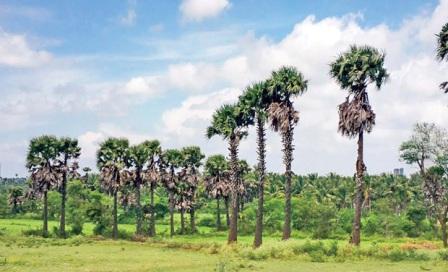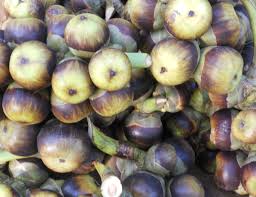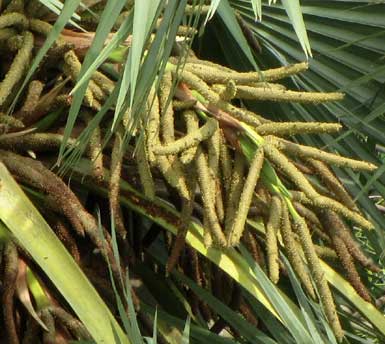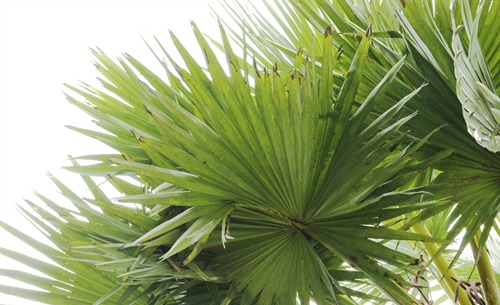Natural Regeneration :
- Naturally regenerates by seeds.
Artificial Regeneration :
- Propagates by nursery raised seedlings and direct sowing.
Seed collection and Storage :
- Palm seeds stored in the shade, but soon found that germination occurs.
- Germination capacity is 70 – 75 %.
Nursery Technique :
- Seeds can be sown in mound formed by keeping sand to form a bed of 1 m broad, 60 cm height or nursery beds built with bricks of 2 m broad, 60 cm height.
- Seeds are sown in 10 cm space and covered with sand.
- About one year old seedling is lifted from the nursery and containerized in
- Polythene bags.
- After rooting transplant in the main field.
Plantation technique :
- For direct sowing 3 – 4 whole fruits are planted in pits (20 cm3) at 10 m apart and half filled with sand and soil mixture.
- Pit is covered with dried leaves.
- Sowing may be taken up during rainy months (November).
- Germination takes place within 3 weeks.
- Spacing: 3m x 3m (1110 palms/ha).
Care & Disease Control :
- First frond appears in about 5 months.
- First fan shaped tree leaves appears only in the 2nd year.
- When it attains the height of 12 – 18 m, comes to flowering (13 – 15 yrs) for padaneer (Sweet sap) purpose. Average of 100 – 200 lit obtained for a period of 4 months from Feb – May.
- Padaneer and fruit yield are highly variable in individual palms.
- Consist of gap filling; inter ploughing, basin rectification in the initial few years.
- Gap filling may be carried out by using containerized seedlings.
- Basin rectification has to be done before rains.
- It helps collection and storage of rain water.
Irrigation :
For proper growth and survival it is necessary to give one or two waterings after planting. This is specifically required in arid regions. Irrigation after planting is not a prerequisite in areas having sufficient soil moisture and precipitation. Higher survival rate and better rate of growth is reported when soil and water conservation measures are also adopted.
Yield :
"Rotation :50 years Each palm may bear 6-12 bunches of about 50 fruits per year. 150 liters of padaneer / tree /Year 24 kg jaggery / tree / year Jaggery recovery/liter of padaneer 180-250 g of jaggery"
Agro Forestory :
- Cowpea, moringa, green gram, red gram, Bengal gram, ber, amla, pomegranate, west Indian cherry, guava can be intercropped
Major uses :
Young roots are anthelmintic and diuretic ,A decoction is given in certain respiratory diseases. Dried roots can also be smoked to heal nasal complaints.The ash of the flower is taken to relieve heartburn and enlarged spleen and liver. The bark decoction, with salt, is used as a mouth wash. A charcoal made of the bark serves as a dentifrice. The pulp of the mature fruit relieves dermatitis. It is also useful as an anti-inflammatory and for dropsy and gastric conditions. Also has potential immuno-suppressive action. Constituents are: gum, fat and albuminoids.
Market details :
Palm Jagerry - Rs 225/ Kg
Carbon stock :
0.316 tonsC/tree





